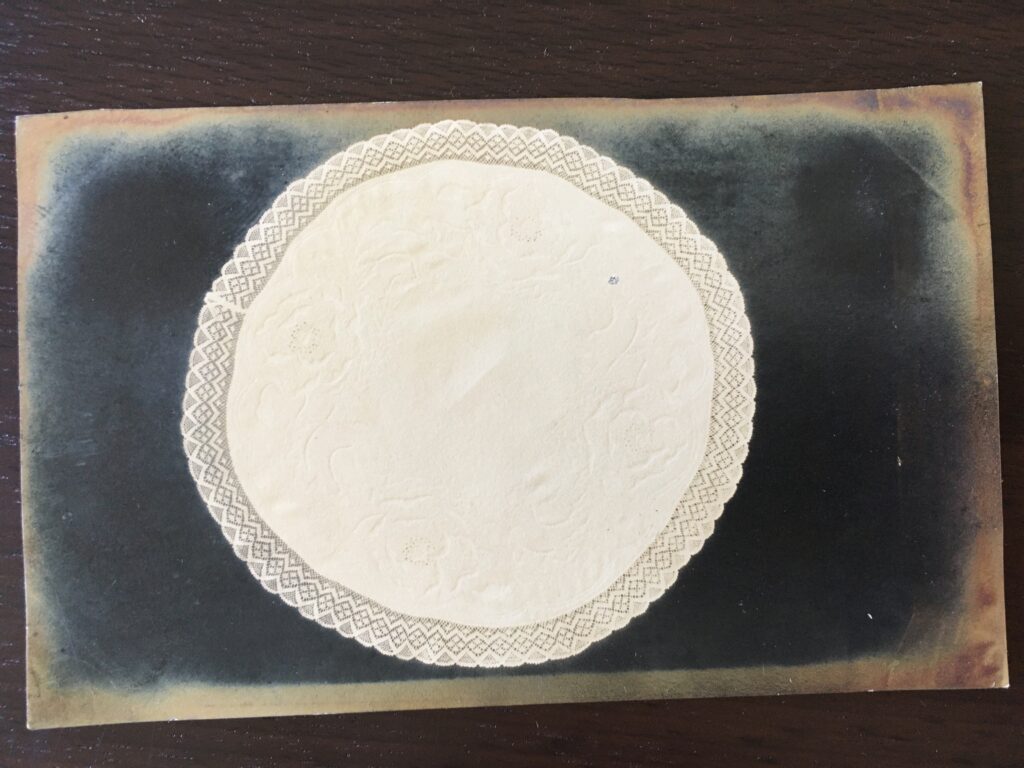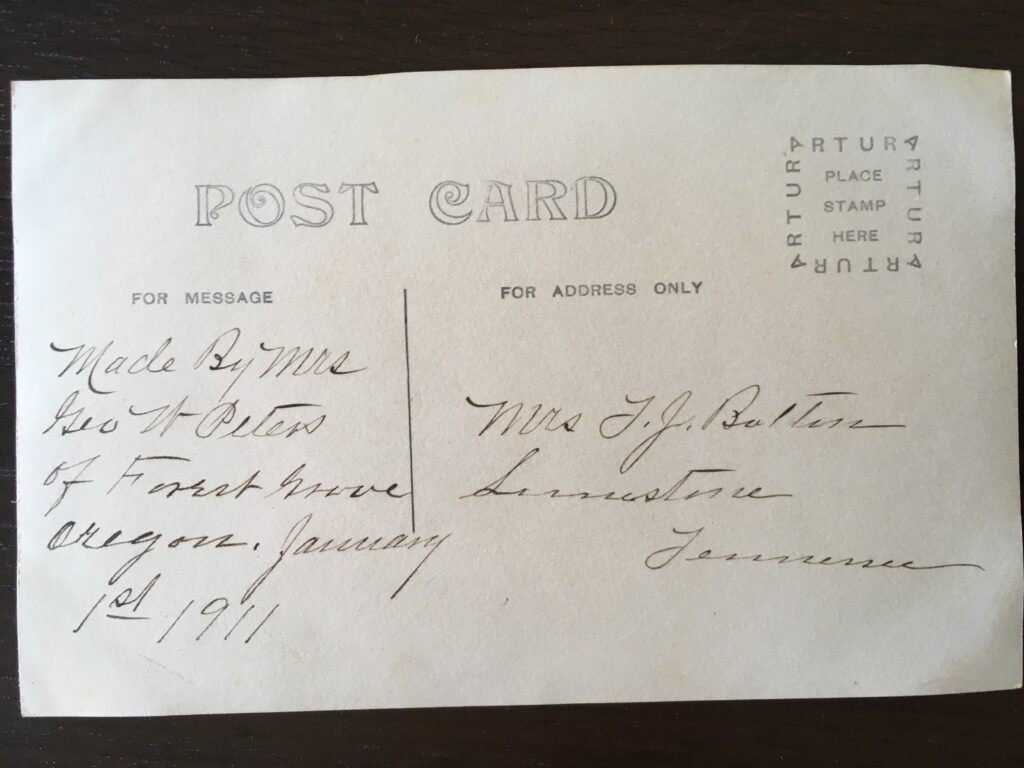Housewives and Handiwork: Tracking Domestic Friendships Through a Doily
Something a bit different for this third Real Photo Postcard (RPPC) in a row — there’s not a person in sight. People used cameras and postcards to document and share all manner of things including dead pets (I don’t own any, but I’ve seen them), caterpillars under canvas (from a research site), and . . . doilies.

I don’t know enough about handicrafts such as this to say much about it. What follows here is largely speculation. If you look closely, you can see the cloth features a rose pattern. It may be damask or some other heavier fabric, for whomever cut, trimmed, and hemmed it managed to make a nearly perfect circle. Then there’s the lace, which features an intricate pattern. Given that the doily survives in photographic form on a postcard, someone was quite proud of this.
Who made it? Mrs George W. Peters of Forest Grove, Oregon. The date provided is 1 January 1911–that could be the date the doily was finished, or when the photograph was taken. The card lacks stamp and postmark, so we don’t know how it was delivered (likely enclosed in a package, perhaps with the doily or with something else–or in an envelope), but it was sent to Mrs. T.J. Bolton of Limestone, Tennessee. It was delivered at some point, because I acquired this card as part of a batch of cards all sent to/from Mr. and Mrs. T.J. Bolton.

This is where additional research comes in to offer grounds for speculation. Fortunately, the Peters were in Forest Grove, Oregon, at the time in time to be counted in the 1910 Census. Mrs George’s name was Anna. She was born in England around 1854, and at some time emigrated to the United States. She and George, who was about a decade older, had only been married two years, and it was a second marriage for her as their household included her son from a previous marriage: Ray Byronds (she had born three other children, but they were dead). Ray, in his early thirties, was born in Michigan and worked as a laborer at odd jobs. George had his own income. He, however, was born in Tennessee, as were his parents.
As for the Boltons, Thomas J. was a farmer who owned his own farm. Sallie’s occupation per the 1910 Census was as a dairy woman–so perhaps the Boltons ran a dairy farm. She was born in 1856, and her husband was twelve years older. Both Boltons were born in the United States (him in Tennessee, her in Virginia). Among the surviving batch of postcards are several sent to Sallie from an “Annie.” Could Annie and Anna be one and the same person? It’s possible, but highly speculative. None of Annie’s cards suggest any romance or impending marriage, although several were sent from Bluefield West Virginia around the time Anna married George–so it’s safer to assume they were separate individuals.
In which case, we’re left with ample unknowns. Did Anna know Sallie before Anna’s marriage to George? If not, perhaps George took his new wife to visit family and/or friends in Tennessee and Anna and Sallie formed a connection. There are so many possibilities–and odds are we’ll never know the answer.
Regardless, Anna evidently wanted to share her domestic accomplishment with Sallie. Hence the photograph which somehow crossed the distance from Oregon to Tennessee. Likewise, Sallie cherished the photograph enough to keep it with other postcards in an album that was still largely whole over a century later.
“Housewives and Handiwork: Tracking Domestic Friendships Through a Doily,” copyright 2021, A.R. Henle.
